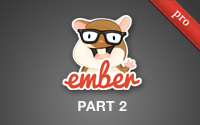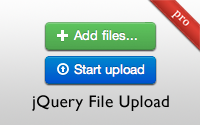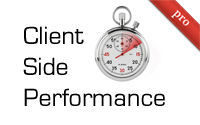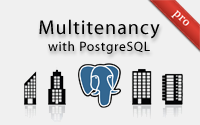Types
- Free Episodes
- Pro Episodes
- Revised Episodes
Categories
- Active Record
- Active Resource
- Active Support
- Administration
- Ajax
- APIs
- Authentication
- Authorization
- Background Jobs
- Caching
- Code Walkthrough
- Controllers
- Debugging
- Deployment
- eCommerce
- Forms
- Mailing
- Models
- Performance
- Plugins
- Production
- Rack
- Rails 2.0
- Rails 2.1
- Rails 2.2
- Rails 2.3
- Rails 3.0
- Rails 3.1
- Rails 3.2
- Rails 4.0
- Refactoring
- Routing
- Search
- Security
- Testing
- Tools
- Views
Strong Parameters
The strong_parameters gem is an improvement over attr_accessible to securely handle mass assignment even when you have complex authorization logic. The functionality will likely be added to Rails 4 so it is a good idea to learn how it works.
(12 minutes)
Ember Part 1
Ember.js is a javascript framework for making rich client-side applications. In the first part of this two part series I show how to setup templates, controllers, and routes.
(15 minutes)
Uploading to Amazon S3
Here I show how to upload files directly to Amazon S3 using CarrierWave Direct and Fog. I then walk through another project which uses jQuery File Upload to handle multiple files and does not use CarrierWave.
(14 minutes)
Ember Part 2
Here we continue our look into Ember.js. First we add a JSON API to persist the entries through ember-data. Then we finish up the project by adding a computed property and a view object.
(14 minutes)
jQuery File Upload
Here you will learn how to upload multiple files over ajax using jQuery File Upload. I start with the basic functionality and customize it to fit the user interface.
(13 minutes)
Dynamic Forms
Learn how to add fields to a form dynamically using another form, complete with custom field types. It's fieldception!
(14 minutes)
Monit
Monit can help ensure your Rails app stays up and running smoothly. Here I show how to set it up, receive alerts, and keep tabs on it through a web interface.
(16 minutes)
Client-Side Performance
Optimizing Rails performance can only take you so far. The client-side plays a big part in how fast a page feels. Here I show many tools that can help make your apps faster than ever.
(14 minutes)
Multitenancy with Scopes
A multi-tenant application can be difficult to implement because the data for each tenant must be completely separate. Here I show how to do this using subdomains and default scopes in Active Record.
(12 minutes)
Multitenancy with PostgreSQL
PostgreSQL Schemas can help create a multi-tenant app by keeping data separate at the database layer. Integrating with migrations can be tricky though, so watch this episode for the full details.
(11 minutes)










